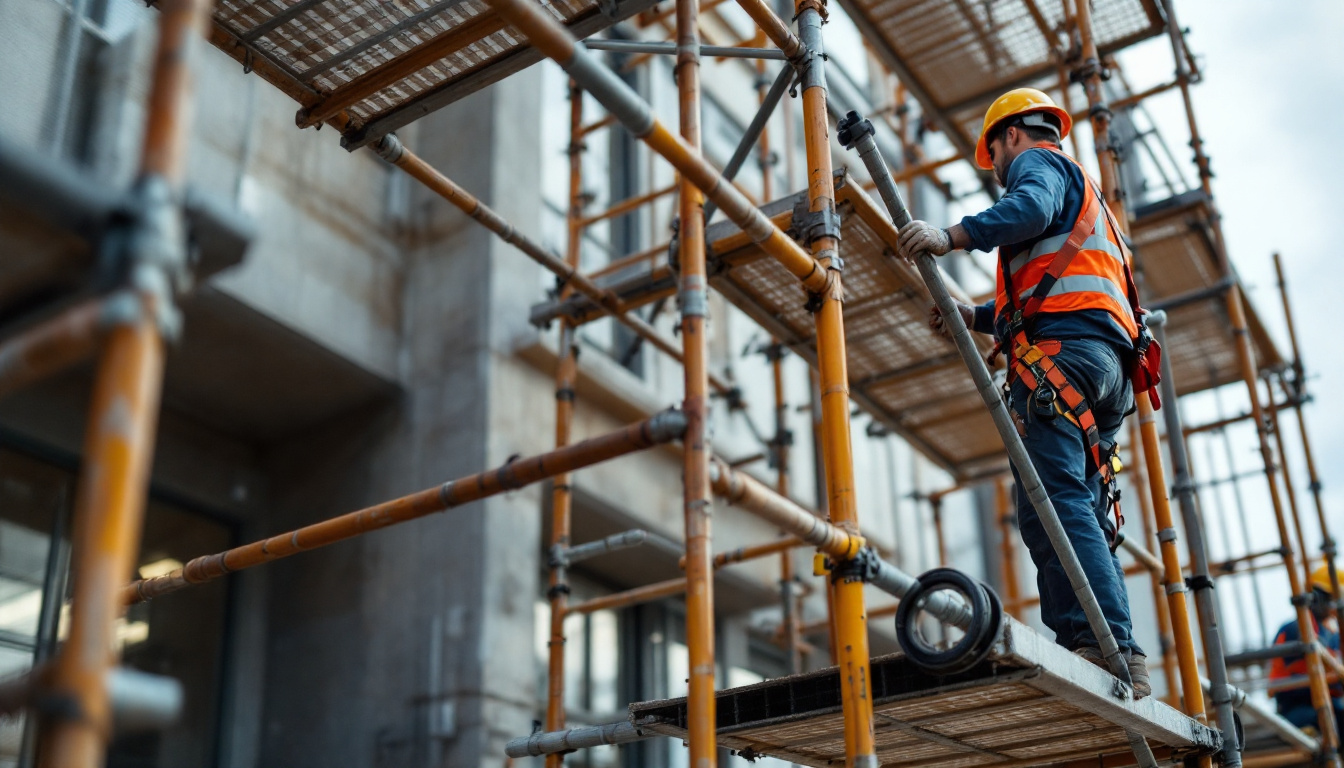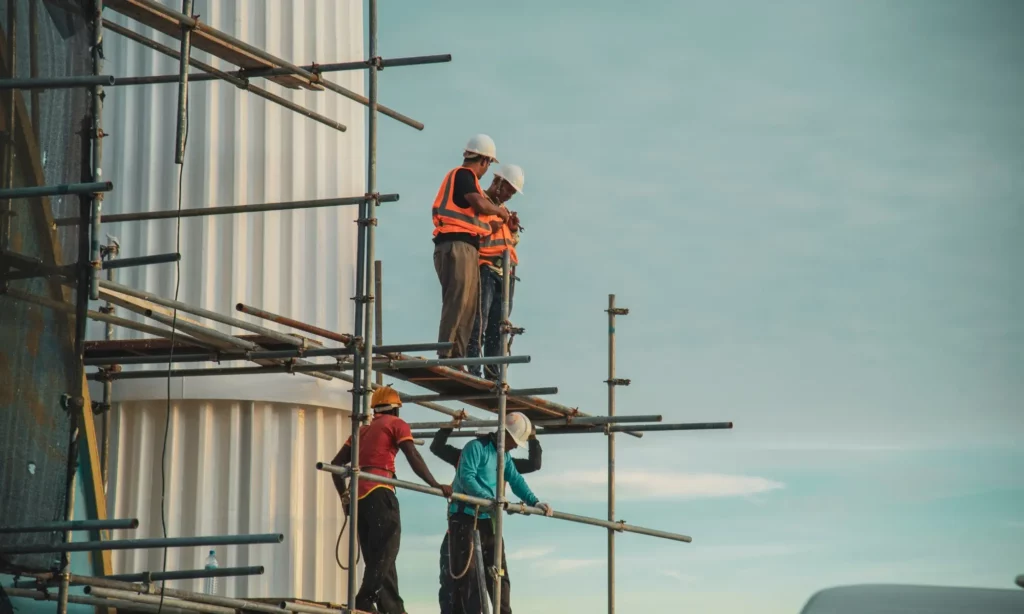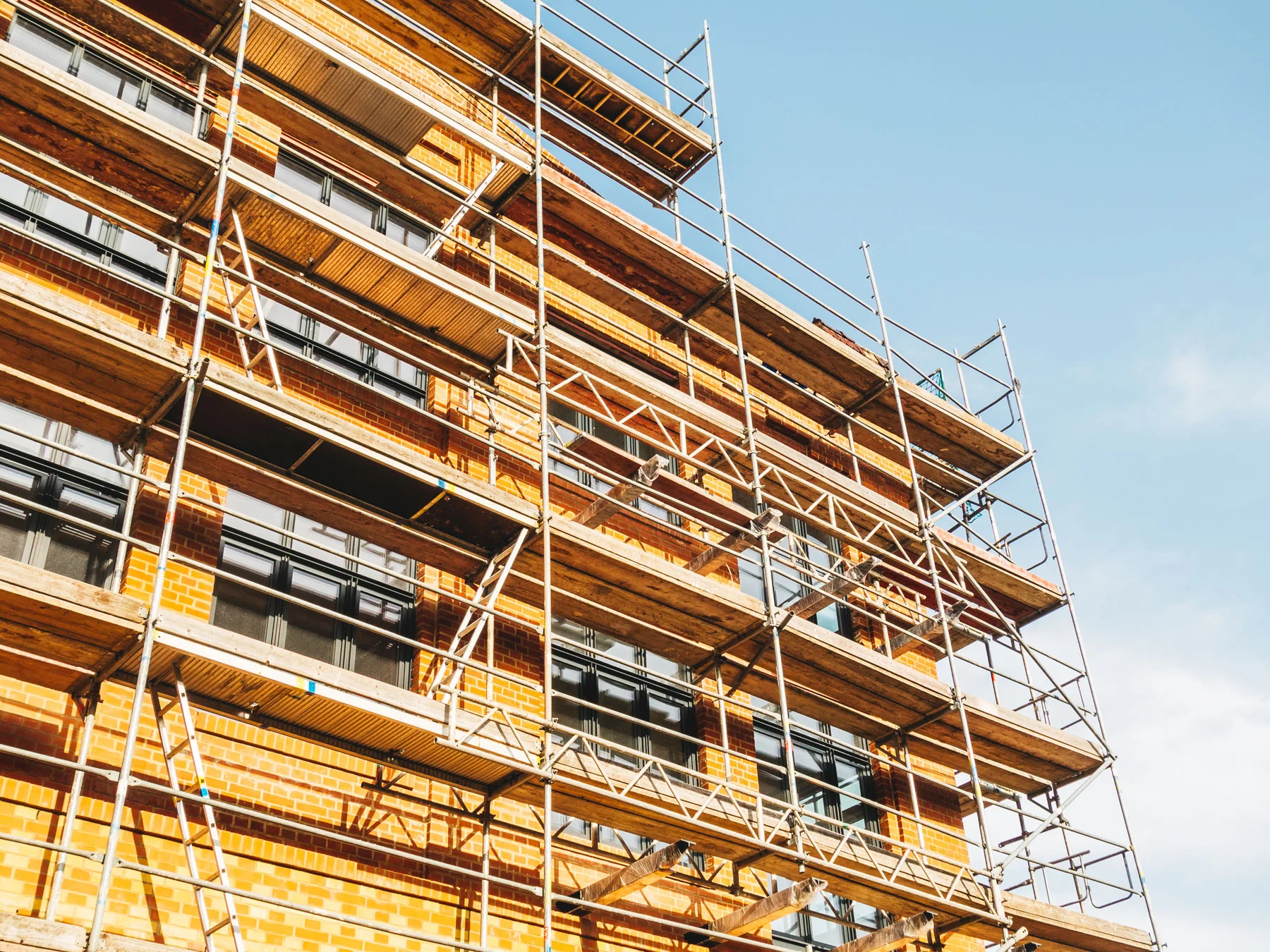In the world of construction, safety and efficiency are paramount. Temporary scaffolding plays a vital role in achieving both of these goals. This article will explore the fundamentals of temporary scaffolding, its importance in ensuring safety, enhancing efficiency, selecting the right type, and ensuring its proper installation and maintenance.
Understanding the Basics of Temporary Scaffolding
To appreciate the significance of temporary scaffolding, it is essential to understand what it is and how it is used in the construction industry.
The uses of temporary scaffolding are diverse, including painting, bricklaying, and general construction. Additionally, it aids in the maintenance of buildings where access to various heights is required. In some cases, scaffolding is also utilized for events, such as concerts or festivals, where elevated platforms are necessary for staging or lighting setups. This versatility makes scaffolding an indispensable tool in both construction and event management.
Definition and Uses of Temporary Scaffolding
Temporary scaffolding refers to a temporary structure erected to support a work crew and materials during the construction or repair of buildings and other large structures. It allows workers to perform tasks at various heights safely and effectively.
Key Components of Temporary Scaffolding
Temporary scaffolding is comprised of several key components, including:
- Standards: Vertical posts that provide the primary support for scaffolding.
- Ledgers: Horizontal members that connect the standards and provide support for working platforms.
- Braces: Diagonal components that increase stability and prevent swaying.
- Platform: The surface on which workers stand while performing tasks, typically made from wood or metal boards.
Understanding these components is essential for both setup and safety, ensuring that scaffolding can withstand the expected loads. Furthermore, the materials used in scaffolding construction can vary widely, from traditional wood to modern aluminum and steel, each offering distinct advantages in terms of weight, strength, and ease of assembly. The choice of material can significantly influence the overall safety and efficiency of the scaffolding system, making it crucial for construction teams to select the appropriate type based on the specific requirements of the project.
Moreover, proper training and adherence to safety regulations are vital when working with temporary scaffolding. Workers must be educated on the correct assembly techniques, load limits, and safety measures to mitigate risks associated with falls or structural failure. Regular inspections and maintenance of scaffolding systems are also essential practices that help ensure the integrity of the structure throughout the duration of its use, thereby protecting the workforce and the public alike. Find more about integrity on https://ethicsunwrapped.utexas.edu/glossary/integrity
The Role of Temporary Scaffolding in Construction Safety
Construction sites can be hazardous places, and scaffolding plays a crucial role in mitigating risks associated with working at heights.

Preventing Falls and Injuries
One of the primary purposes of scaffolding is to prevent falls, a leading cause of injuries and fatalities in construction. Well-designed scaffolding systems include guardrails, toe boards, and safety nets that help keep workers secure while they perform their tasks.
Training workers on the proper use of scaffolding is equally critical. When workers understand the risks and how to navigate scaffolding safely, the likelihood of accidents diminishes significantly.
Moreover, regular inspections and maintenance of scaffolding systems are essential to ensure their integrity and safety. Any signs of wear, damage, or instability must be addressed immediately to prevent potential accidents. By implementing rigorous safety protocols, construction managers can foster a culture of safety that prioritizes the well-being of all workers on site.
Click here to read about mesh fencing.
Enhancing Worker Accessibility and Mobility
Temporary scaffolding not only provides protection from falls but also enhances accessibility to various work areas. By creating stable platforms at different heights, workers can move freely and efficiently without compromising their safety.
Furthermore, scaffolding facilitates better coordination among teams by providing a centralized location for tools and materials, reducing unnecessary trips and increasing productivity.
In addition to improving workflow, scaffolding can also be customized to accommodate specific project needs. For instance, modular scaffolding systems can be adjusted and reconfigured as the project evolves, allowing for flexibility in design and execution. This adaptability not only saves time but also minimizes disruptions, enabling crews to maintain momentum and meet project deadlines effectively. As a result, scaffolding becomes an indispensable asset in the dynamic environment of construction, supporting both safety and operational efficiency. To find more about efficiency click here.

Enhancing Construction Efficiency with Temporary Scaffolding
In addition to safety, temporary scaffolding contributes significantly to the efficiency of construction projects.
Speeding Up Construction Processes
The ability to access multiple work areas quickly is vital for speeding up construction processes. Temporary scaffolding allows for various tasks to be carried out concurrently, minimizing downtime.
Moreover, it supports inspectors and other personnel, making it easier to monitor the progress and quality of work, which ultimately leads to timely project completion. This accessibility not only accelerates the workflow but also fosters a culture of collaboration among workers, as they can communicate and coordinate their efforts more effectively from elevated positions.
Additionally, the design of temporary scaffolding can be customized to fit the specific needs of a project, allowing for innovative solutions that further enhance productivity. For instance, modular scaffolding systems can be quickly assembled and disassembled, enabling teams to shift focus to different areas of the site without unnecessary delays.
Facilitating Better Project Management
With organized scaffolding in place, project managers can plan and allocate resources more effectively. A well-organized scaffolding structure can adapt to different stages of construction, allowing for greater flexibility in managing labor and materials.
Using scaffolding can also lead to more accurate budgeting, as fewer resources go to waste when everything is readily accessible and organized. This efficiency extends to the scheduling of subcontractors, as scaffolding provides a clear framework for when and where specific trades can operate, reducing the likelihood of conflicts and ensuring that each phase of construction flows seamlessly into the next.
Furthermore, the presence of scaffolding can enhance communication on-site. With a clear visual structure in place, all team members can easily identify their responsibilities and the status of various tasks. This transparency not only improves accountability but also helps in identifying potential bottlenecks early, allowing for proactive adjustments to keep the project on track.
Selecting the Right Temporary Scaffolding for Your Project
Selecting the appropriate type of scaffolding is crucial for maximizing safety and efficiency on construction sites.
Factors to Consider When Choosing Scaffolding
When selecting temporary scaffolding, consider factors such as:
- Project Type: Different projects require varying scaffolding types.
- Height Requirements: Ensure the scaffolding can reach the necessary heights.
- Load Capacity: Determine the weight that the scaffolding must support based on workers and materials.
- Site Conditions: Assess environmental factors, such as wind and moisture, that may affect scaffolding stability.
Taking these factors into account will help in choosing the most effective scaffolding system for your particular project.
Different Types of Temporary Scaffolding
Several types of scaffolding are available to cater to various construction needs. These include:
- Frame Scaffolding: Commonly used for its ease of assembly and versatility.
- System Scaffolding: Comprising pre-engineered components for quick and efficient setup.
- Braced Scaffolding: Provides additional support for heavy loads.
- Suspended Scaffolding: Ideal for high-rise buildings, suspended from structures above.
Each type has its own advantages and should be chosen based on the project’s specific requirements.
Proper Installation and Maintenance of Temporary Scaffolding
Even the best scaffolding systems are only as effective as their installation and maintenance processes.
Guidelines for Safe Scaffolding Installation
To ensure safety and efficiency, it’s important to follow proper installation guidelines. This includes:
- Ensuring a solid foundation that can support the weight of the scaffolding.
- Double-checking that all components are correctly aligned and securely fastened.
- Regularly training workers on safe setup procedures.
Adhering to these guidelines significantly reduces the risk of accidents caused by improperly installed scaffolding.
Importance of Regular Scaffolding Inspection and Maintenance
Regular inspection and maintenance of temporary scaffolding are essential to ensure its ongoing safety and functionality. Conducting periodic checks helps identify potential wear and tear, faulty components, or any other issues that may arise over time.
Implementing a robust maintenance schedule can save money in the long run, preventing costly accidents and project delays while enhancing overall worker safety.
In conclusion, temporary scaffolding is an indispensable element of safe and efficient construction sites. By understanding its basics, ensuring safety, enhancing efficiency, selecting the right type, and prioritizing installation and maintenance, construction professionals can achieve remarkable results while keeping their teams safe.
